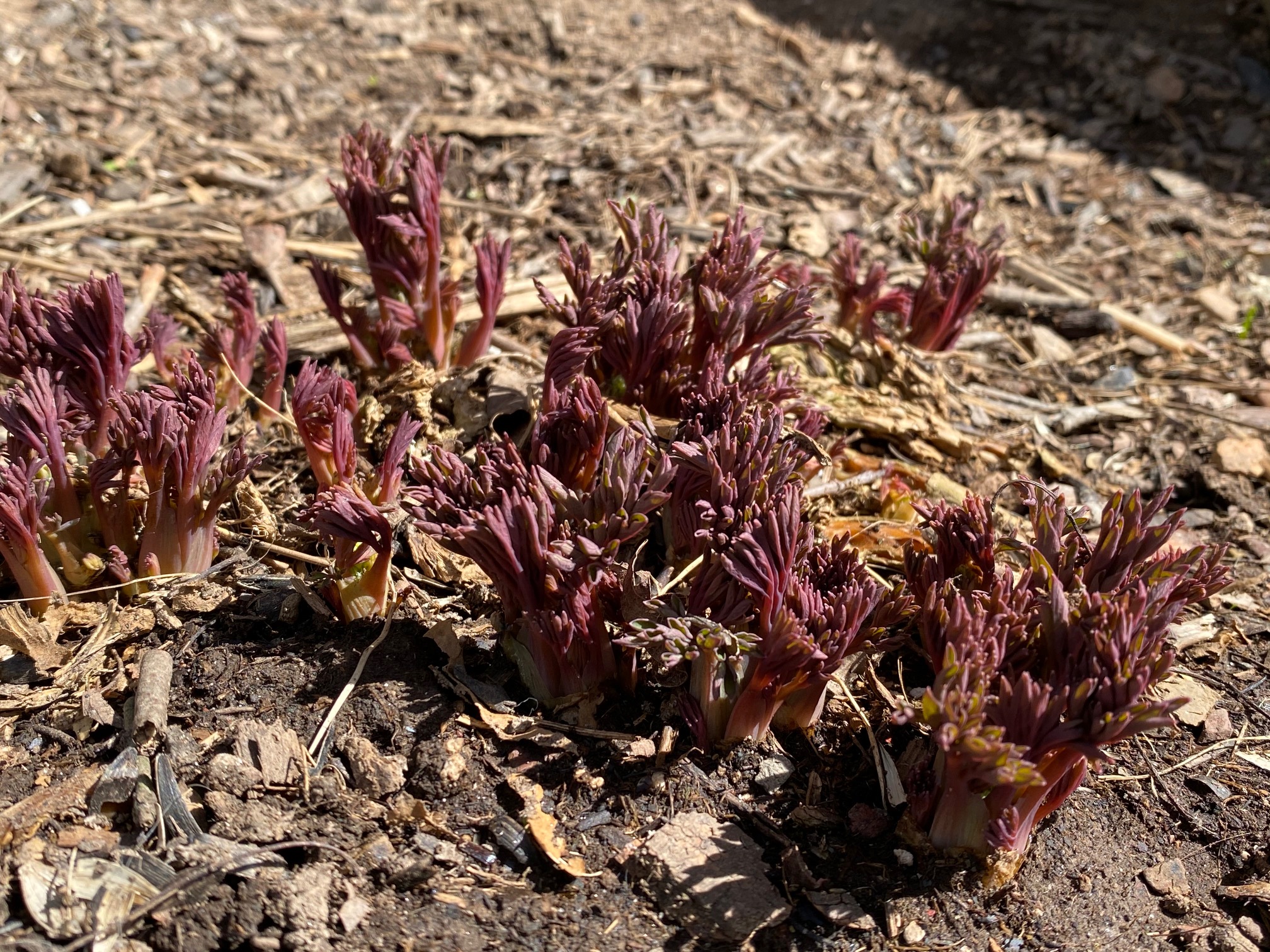Sprouts – Photo: L. Weikel
Progression
A couple weeks ago (or maybe it was only days, time’s been so skewed for me lately), I mused over the possibility of taking photos of the buds coming up out of the ground. I’m pretty sure I specifically made reference to documenting the progression of either the crocuses (croci? crocae?) or daffodils, or maybe even both.
But instead of either of these traditional harbingers of spring, I’m choosing a more unique and perhaps slightly less stereotypical spring blossom to track: Lamprocapnos spectabilis (aka Dicentra spectabilis) or Bleeding Heart.
I’ve been surprised the past couple of years by how this plant seems to almost magically appear, fully formed, overnight. I’m certain my surprise at its dramatic arrival into my awareness is a result of my lack of attention. So I’m seeking to bring more attention to my Bleeding Heart plant this year, and part of my efforts will include documenting the progression of its growth.
Learn Something New
I distinctly remember my mother introducing me to this particular flowering plant when we were weeding behind the stone farmhouse in which I grew up. The garden we had always felt so wild, planted as it was on a small hillside with old mortar and stone walls lining the perimeter. There were snakes and worms and voles and moles in that garden. Bees and salamanders. And among the flowers were the bleeding hearts.
I can’t remember the words my mother used but I can remember the awe I felt when looking at the blossoms and wondering how amazing it was that a plant could so obviously resemble a heart splitting and releasing a single drop of precious blood. It bordered on the magical that a plant could mimic something so human.
Ever since then, I’ve always associated these flowers with my mother. I don’t know why. She taught me the names of lots of things; why do these, as well as the scent of lilacs, always bring her back to me so vividly?
When looking these flowers up (so I could know their proper name), I discovered that the blossom, when turned upside down, resembles something quite different than a bleeding heart, and hence is the basis of its ‘other’ name.
While you can certainly look it up yourself, I’m going to wait until my little sprouts grow up and let them reveal their other name to us themselves.
(T-244)
